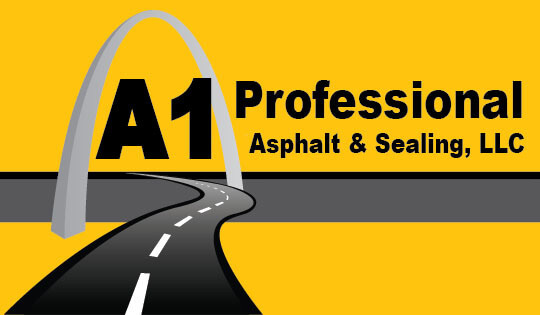7 Easy Facts About A1 Professional Asphalt & Sealing Llc Shown
7 Easy Facts About A1 Professional Asphalt & Sealing Llc Shown
Blog Article
An Unbiased View of A1 Professional Asphalt & Sealing Llc
Table of ContentsLittle Known Facts About A1 Professional Asphalt & Sealing Llc.See This Report on A1 Professional Asphalt & Sealing LlcSome Known Facts About A1 Professional Asphalt & Sealing Llc.Some Known Incorrect Statements About A1 Professional Asphalt & Sealing Llc Some Ideas on A1 Professional Asphalt & Sealing Llc You Need To Know
In its structure, asphalt consists mostly of Asphalt integrated with numerous kinds of accumulation, such as sand or gravel. Pavement, on the other hand, is a kind of concrete which contains accumulations, cement, and water. diagonal parking vs straight parking. Depending on the place and usage of the used sidewalk material, a mixture of different chemical admixtures might be included to make it more long lasting
What is the distinction in between asphalt and blacktop driveways? Blacktop is a mix of rock, sand, and gravel covered with asphalt. Blacktop is created to create an even surface area because of its increased resistance to weathering and capacity to birth larger lots. What is the distinction in between asphalt concrete sidewalk and concrete? Sidewalk can be constructed from either asphalt or concrete, with asphalt being smoother and more resilient as a result of its binder, while concrete hardens through the curing process however often tends to use down in time as a result of weathering.
The 6-Minute Rule for A1 Professional Asphalt & Sealing Llc
How do I preserve my asphalt driveway? The most essential component of maintaining an asphalt driveway is making certain it's properly secured.
These should be gotten rid of and filled up out as soon as feasible. Frequently move away any type of loose rocks, dirt, or foliage to stop further damage from taking place. Asphalt and pavement are basic components on highways almost everywhere. Despite their similarities, these 2 products have some necessary differences that make each appropriate for different conditions.
Recognizing these distinctions can aid ensure an appropriate decision is made when selecting a surface area solution. You can find out more write-ups such as this one below.
The 10-Minute Rule for A1 Professional Asphalt & Sealing Llc
Lately, State freeway agencies and FHWA were astonished by an exploration: The clandestine use re-refined engine oil bottoms in asphalt prevails. Simon Hesp, Queens University (Kingston, Ontario) Asphalt is the sticky black deposit that is left over from the handling of crude oil. It has been used in paving for more than a hundred years.

The asphalt, which offers as the pavement's binder, is also one of the most pricey component of the cost of the product for paving roads. The weight of an asphalt pavement varies relying on the aggregate type, the asphalt, my website and the air space material. Utilizing a typical example of 112 pounds per square yard per inch of density, a 1-mile (1.6-kilometer)-long, four-lane highway with a 4-inch (10-centimeter) lift and 12-foot (3.6-meter)-broad lanes weighs about 6,300 heaps (5,700 metric loads).
The 300 loads of asphalt in 2002 would have cost around $48,000. The rising price of asphalt had a significant impact on the price of building pavements, which enhanced interest in discovering ways to decrease expenses.
The Buzz on A1 Professional Asphalt & Sealing Llc
RAP already has asphalt, albeit aged product that does not have the exact same homes of fresh asphalt. During a hallway conversation at a 2010 technical conference, Matt Mueller, after that a State engineer of products from Illinois, revealed that his department of transportation had found phosphorous in one of the asphalt binders it was acquiring.

The supplier denied including PPA, but declined to disclose what had been contributed to the binder. When pushed by the division of transport, the supplier exposed that it was including what it called an asphalt extendernow known to be re-refined engine oil bottoms (REOB). REOB includes a tiny quantity of phosphorus, which is what division chemists initially recognized.
"No one recognized this product was being contributed to asphalt, had seen any study on exactly how this might impact efficiency of hot-mix asphalt sidewalks, or recognized for how much time and exactly how widely it was being used throughout the nation," claims Mueller. After conversations at the technological conference, he states, "It swiftly went from being simply a problem in Illinois to coming to be a nationwide and worldwide concern." Component of the goal of the Chemistry Research Laboratory at TFHRC is to create brand-new examination techniques.
The homes of asphalt binders differ commonly depending upon the resource of the crude oil and the refining process utilized. For low wintertime temperatures, softer asphalts are needed to prevent cracking. To avoid rutting in hot climate, the asphalt has to be stiffer. The initial test for determining the rigidity of asphalt was for the tester to chew it.
The smart Trick of A1 Professional Asphalt & Sealing Llc That Nobody is Discussing
An equipment called a dynamic shear rheometer (DSR) was presented to the market throughout the Strategic Highway Research Program's research study job, which ranged from 1987 to 1992. The DSR is currently the industry requirement for gauging the viscoelastic properties of paving asphalt. The device was not established for the paving sector (https://www.gaiaonline.com/profiles/a1asphaltseal/46656807/).
The DSR allows product developers to create tooth paste with the ideal consistency so that it can be pressed from a tube but not fall off the tooth brush. The DSR tests binder put in between 2 parallel plates regarding the dimension of a quarter. One of the plates relocations and the device determines the viscoelastic buildings of the asphalt.
Report this page